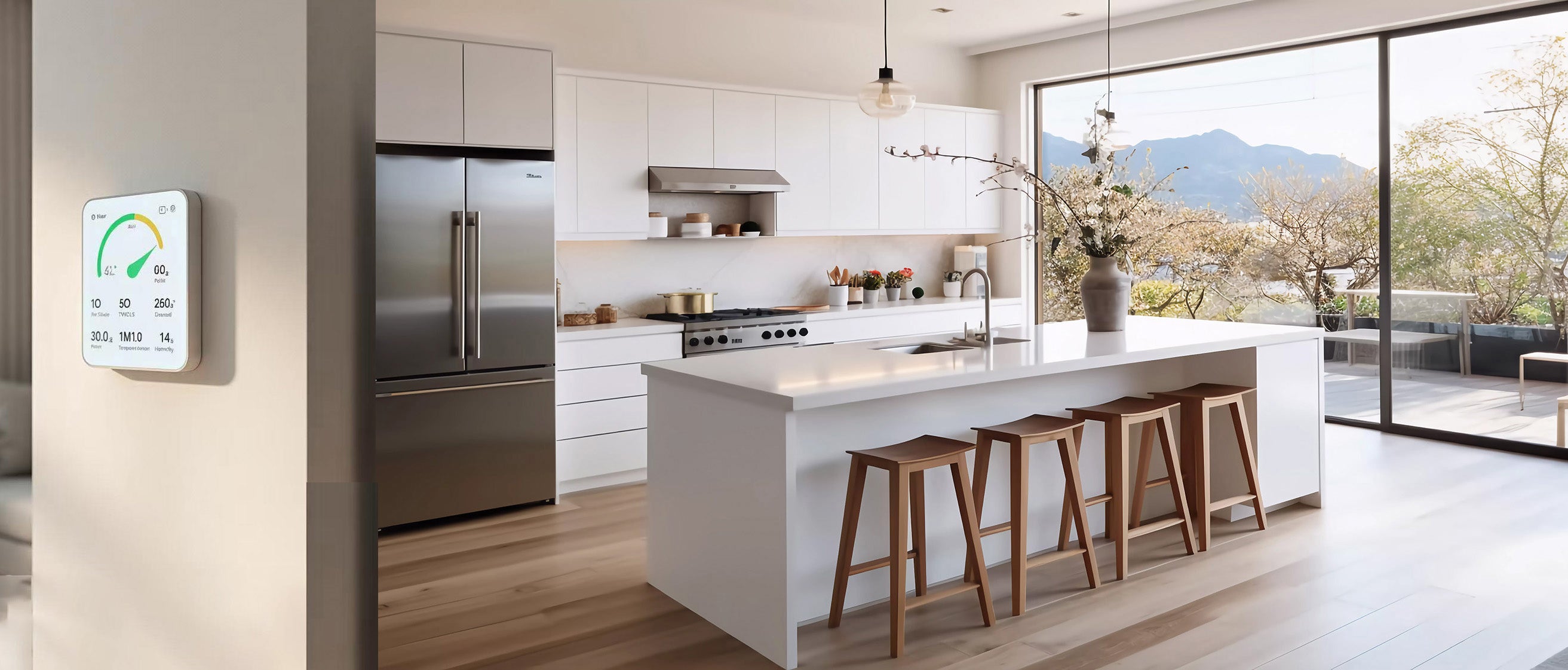
INDOOR AIR QUALITY PARAMETERS
Indoor air quality (IAQ) parameters are critical for ensuring a healthy and comfortable environment. They can be categorized into chemical, physical, biological, and other factors:
1. Chemical Parameters
- Carbon Monoxide (CO): A toxic gas from combustion sources (e.g., heaters,
stoves). High levels cause headaches, dizziness, or death.
- Carbon Dioxide (CO₂): Indicates ventilation adequacy. Elevated levels (>1,000 ppm) may cause drowsiness and poor concentration.
- Volatile Organic Compounds (VOCs): Emitted by paints, cleaners, and building materials. Include formaldehyde (from furniture, adhesives), which can irritate eyes/throat and is carcinogenic.
- Ozone (O₃): Generated by some air purifiers or outdoor pollution. A lung irritant that worsens asthma.
- Nitrogen Dioxide (NO₂): From gas stoves or heaters. Causes respiratory irritation and exacerbates asthma
- Radon: A radioactive gas from soil beneath buildings. Long-term exposure increases lung cancer risk.
3. Physical Parameters
Temperature: Affects comfort; ideal range is 20–24°C (68–75°F).
Relative Humidity: Optimal 30–60%. High humidity promotes mold; low humidity causes dryness.
Ventilation Rate: Measured by air changes per hour (ACH). Inadequate ventilation traps
pollutants.
4. Biological Contaminants
Mold/Bacteria: Thrive in damp areas. Cause allergies and respiratory infections.
Allergens: Pollen, dust mites, pet dander. Trigger asthma and allergic reactions.
Viruses: Spread via aerosols (e.g., COVID-19). Ventilation and filtration reduce transmission.
5. Other Parameters
Pressure Differentials: In controlled environments (e.g., labs) to prevent contaminant spread.
Odors: Subjective indicators of pollution (e.g., from VOCs or mold).
6. Standards and Guidelines
ASHRAE (US): Defines ventilation (e.g., 15–20 cfm per person) and thermal comfort.
WHO/EPA: Set limits for PM, CO, NO₂, and other pollutants.
Local Regulations: May address radon, asbestos, or lead in older buildings.
7. Standards and Guidelines
ASHRAE (US): Defines ventilation (e.g., 15–20 cfm per person) and thermal comfort.
WHO/EPA: Set limits for PM, CO, NO₂, and other pollutants.
8. Monitoring and Mitigation
- Use air quality monitors for real-time data.
- Improve ventilation, use air purifiers with HEPA filters, control humidity, and reduce pollutant sources.
- By addressing these parameters, indoor environments can be made safer and more comfortable.
Featured collection
-
6-IN-1 Portable Environment Monitor: O2, CO, Altimeter, Barometer, Temperature, Humidity
Regular price $79.99 USDRegular priceUnit price / per$89.99 USDSale price $79.99 USDSold out -
7-IN-1 Outdoor O2 & CO Detector with Thermometer, Hygrometer, Stopwatch, Flashlight
Regular price $79.00 USDRegular priceUnit price / per$150.00 USDSale price $79.00 USDSale -
4-IN-1 SMART INDOOR AIR QUALITY MONITOR: SMOKE, CO, TEMP, RH
Regular price $30.99 USDRegular priceUnit price / per$66.00 USDSale price $30.99 USDSale -
SMART RADON GAS MONITOR
Regular price $199.00 USDRegular priceUnit price / per$299.00 USDSale price $199.00 USDSale




